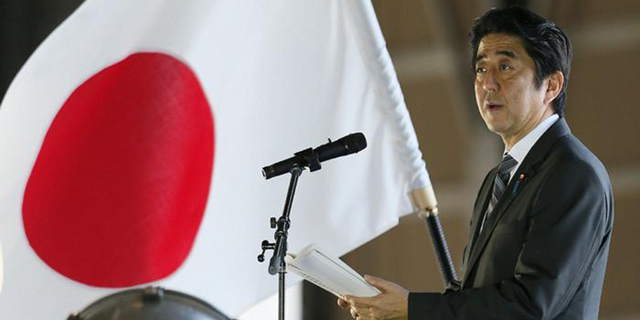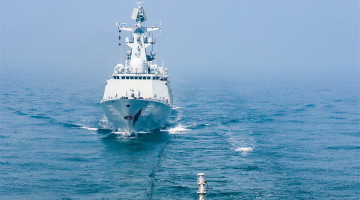
By Fang Xiaozhi
Recently, Japan released its 2019 defense white paper, which elaborates on the country’s recognition of its surrounding security environment, the security threats it faces and the security policies to be implemented, and highlights the country’s new stance to attach great importance to capacity building in new-type security fields such as the outer space, cyberspace and electromagnetic waves.
Japan’s defense white paper is an authoritative source of information related to the country’s defense policies as well as an important way for the Japanese government to win public understanding and support for its defense policies and to improve the image of the Japan Self-Defense Forces (JSDF). However, with the increasing rightist tendency of the Japanese government in recent years, the content of its defense white paper has seen profound changes, with its role transitioning from a way to improve the public image of the Japan Self-Defense Forces to a tool to overstate the external threats faced by Japan and seek pretexts to justify its military expansion.
In this year’s defense white paper, Japan deliberately overstated the severity of its surrounding security environment, saying that it is facing more prominent unsafe factors. This aims to create a tense atmosphere. Particularly in the section “Military Trends in the Neighboring Countries of Japan,” the white paper takes China as the second country after the US to elaborate, not only listing the so-called “unilateral, coercive attempts to alter the status quo” of China in the South China Sea and mentioning China’s aircraft carrier Liaoning’s expedition to the Pacific Ocean and Chinese air force’s activities in the Sea of Japan, but also stressing that “Japan needs to continue to pay utmost attention to these developments.” In spite of the easing situation of the Korean Peninsula, the white paper still calls the Democratic People’s Republic of Korea (DPRK) “serious and imminent threats” to Japan’s security. It also stresses that there has been no essential change in the DPRK’s nuclear and missile capabilities, ranking the DPRK the third country to mention. The fourth country mentioned in the white paper is Russia, saying that Russia’s military activities are turning upward in the region surrounding Japan. Japan believes that those factors have threatened the regional security structure dominated by the United States and Japan, which must be addressed through strengthening military readiness.
Guided by this philosophy, Japan has become increasingly active in enhancing its military strength. It has not only increased its military spending year after year, but also taken targeted measures. For instance, according to Kyodo News, Japan’s defense spending has maintained growth for seven consecutive years by 2019, hitting a record high of 5.2574 trillion yens. Under the strong fiscal support, Japan has enhanced the building of new military equipment. For example, it decided to introduce the land-based Aegis Combat System, test the new-type sea-based Aegis ships and commission F-35A fighter jets. In addition, to achieve “defense of isolated islands,” the white paper trumpets the importance of reconstructing the Izumo destroyer into an aircraft carrier. Japan plans to invest 70 million yens in researching the impact of aircraft’s take-off and landing on the ship. The development of these new military equipment far breaks the principle of “exclusively defense-oriented defense.”
Meanwhile, Japan has constantly broken the limitations of the Pacifist Constitution by strengthening international defense cooperation and increasing the use of military forces abroad. The 2019 white paper has listed the countries and regions that Japan intends to deepen cooperation in turn, which are Australia, India and the ASEAN. So far, Japan has already conducted the first joint fighter drill within its territory with Australia. It also plans to hold the first “2+2” meeting between foreign ministers and defense ministers with India, at which the two countries are expected to sign a military logistics pact that demonstrates their friendly relationship in the realm of defense. Among ASEAN members, Japan gives top priority to its military cooperation with Indonesia that has established a “2+2” mechanism with it. Meanwhile, it intends to strengthen joint military trainings with countries like Vietnam and Singapore. Before that, the Japanese government already donated TC-90 trainers and other equipment to the Philippine army. In the future, Japan will send troops of its Self-Defense Forces to provide “capacity-building aid” for the Philippines.
In a nutshell, Japan issued the new edition of defense white paper with the purpose not only to publicly announce its future defense policies and military development guidelines, but also to further remove obstacles for it to break stipulations and limitations of the peace constitution. If Japan significantly increases its military budget, promote all-round military expansion and accelerate the process of Japan-US military integration based on this philosophy in the future, it will not only escalate the tension in regional situation, but also cause Japan to fall into a security dilemma.
(The author is a research fellow at the BRI Institute of Strategy and International Security, Fudan University.)









